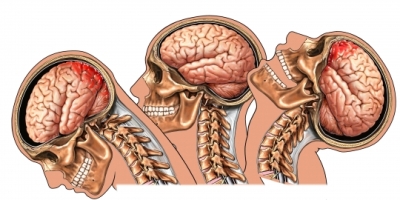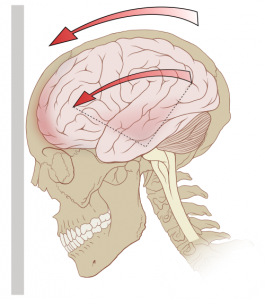
The forces imposed on the cervical spines of passengers of colliding vehicles are tremendous and the damage to the vehicles is no indication of the extent of injury imposed on them.
Research this year also showed in children ages 12 and younger, falls were the most common cause of head injuries. In children under age 2, falls accounted for 77 percent of such injuries; in those 2-12, falls were the cause of 38 percent of head injuries1.
Neck trauma can lead to chronic pain syndrome, including pain decades later.
Signals from nerve endings (proprioceptors) in the neck participate in the co-ordination of eye, head, and body posture, as well as spatial orientation2.
The neck contains systems directly involved in balance control (neck afferents), blood pressure, and heart rate (carotid bodies). Neck movements are invariably linked to head movements, therefore, experiencing unsteadiness, light headedness or vertigo can come from the neck due to alterations in the following mechanisms:
Simple version
- Inner ear balance
- Eye co-ordination
- Blood pressure
- Nerve signals
- Body position sense
In people with whiplash injury, the nerve endings of the neck become over excited and start sending mixed messages to the brain and brainstem. There are also other nerve endings around the spine related to one’s fight/flight system which can change temperature, cause inflammation and make muscles really tight. Poor neck motion and tight muscles changes the way information is sent to the brain and perception of where your is head is in relation to your body becomes altered.
Your neck communicates with your inner ear to create a complete picture of space relative to your posture. When there is a mismatch of information coming from the neck and inner ear into the brain, the result is known as cervical vertigo.
 People with neck pain, poor neck motion, or a history of whiplash injury (sometimes years ago) will be more prone to cervical vertigo.
People with neck pain, poor neck motion, or a history of whiplash injury (sometimes years ago) will be more prone to cervical vertigo.
Complex version
- Vestibular function
- Visual spatial orientation
- Cardiovascular control
- Neurovascular control
- Proprio-autonomic reflexes
In people with whiplash injury, there is hyperexcitation of the cervical proprioceptors on one hand, and dysfunction of the central nervous system, such as the hypothalamus, brain stem and cerebellum, on the other. These two factors induce disequilibrium by a trigger-and-target relationship in which the proprioceptors act as a trigger and the central nervous system acts as a target.
Abnormal autonomic reflexes in people with whiplash injury can be explained not only due to hyperexcitation of the cervical sympathetic nerves, but also that of cervical and lumbar proprioceptors. In other words, these reflexes are considered proprio-autonomic reflexes. These reflexes are more evident in people with cervical pain.
Cerebellar symptoms can also manifest by hyperexcitation of cervical proprioceptors. Hypertonicity of cervical and lumbar erector muscles in people with whiplash injury can be explained not only due to hyperexcitation of gamma fibres, but also that of sympathetic nerves in these muscles. This hypertonicity affects the central nervous system, causing disequilibrium following whiplash injury3.
References:
- Quayle, S. K. Epidemiology of blunt head trauma in children in U.S. Emergency Departments. N Engl J Med. 2014 371: 1945-1947.
- Brandt, T., et al. Cervical vertigo. J Neurol Neurosurg Psychiatry. 2001 71: 8–12.
- Hinoki, M. Vertigo due to whiplash injury: a neurotological approach. Acta Oto-laryngologica Supplementum. 1984 419: 9-29.
